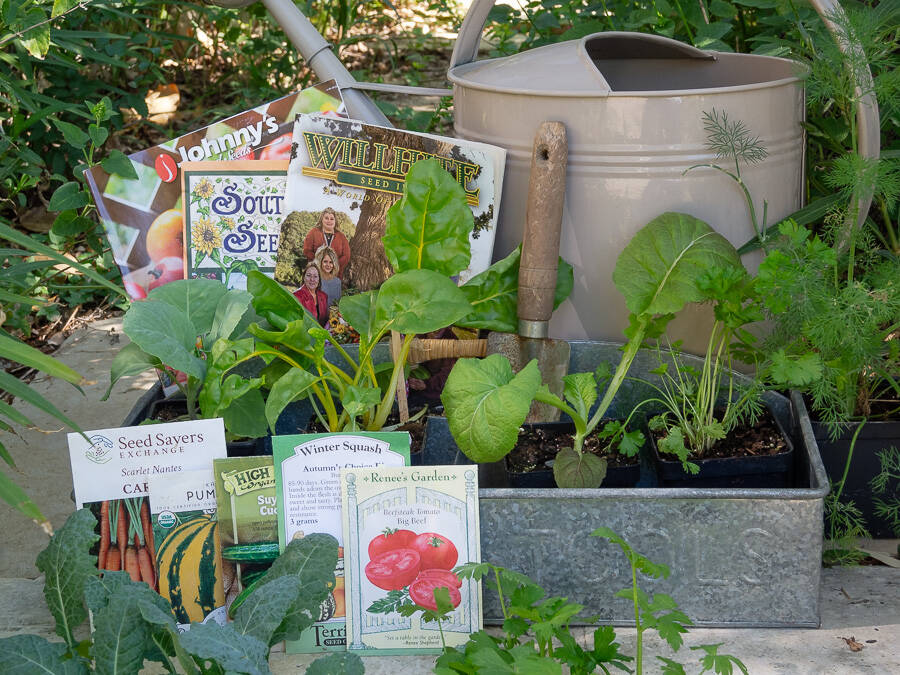Although it may still be a while before the growing season fully restarts, we need to make plans to wake our hibernating vegetable plots.
Preparations for the growing seasons are critical to get plants off to the best possible start. Many factors are under our control, some are not. For example, plants do not photosynthesize well until they get at least 10 hours of daylight (Feb. 11, 2024).
Growth is also retarded until soil temperatures reach 40-45 degrees. Apart from these environmental conditions, there are other factors we need to control such as garden hygiene, soil testing, soil amending and seed selection.
Let’s examine these activities in more detail:
Spring cleaning
It’s always a good idea to clean your garden on a regular basis. Weeds need to be removed frequently since they thrive, even in winter.
Remove fallen leaves and fruit in the orchard as they can transmit disease to future fruit.
Removing debris will reduce places where slugs, snails, fungi, and other bothersome pests can hide until spring.
Soil sampling
This is probably the most important job! Sample soil every two to three years. Each season plants remove important nutrients from the soil, so monitor for deficiencies and enrich for promoting optimal growth.
A soil test is simple to do and there are full instructions on how and when to submit soil samples on the Clallam Conservation District website (clallamcd.org/soil-testing).
Please note that about two pounds of soil (about 3/4 of a gallon bag) will be needed. Remember to also state what is intended to grow since this will influence recommendations for that sample. A test costs about $28.
Amending soil based on results
When the test results are emailed to you, look at them carefully. They will show levels of the three major nutrients: nitrogen, phosphorus, and potassium, also referred to as NPK, and includes a measurement of pH, which will disclose if your sample is alkaline or acidic. If acidic, you will need to add some lime.
The test results will indicate how much additional nutrients are needed to add for optimal plant health. These amounts are based on garden plots of 1,000 square feet, so adjust these numbers based on the garden size.
Warming the soil
As mentioned before, plant growth goes dormant when we have less than 10 hours of daylight and soil temperatures lower than 40 degrees. We cannot alter daylight, but we can influence temperature!
As the time for direct sowing seed approaches, we can modify the soil temperature by adding a row cover or dark plastic cover to trap available heat. Clear plastic will also work, but may kill off beneficial microbes if left on too long, as excessive heat will sterilize the soil.
The soil temperature should be monitored using a soil thermometer ($10-$15) available at many local stores, at one-inch soil depth.
Mulching
This technique is useful on several levels. It will help to warm the soils and stop lower layers from freezing and will also trap winter moisture for use later in the season. If you practice “no dig” gardening, you will already be familiar with a fundamental aspect of this practice.
Mulches can come in various forms, from composts to fine shredded barks. Green mulches such as grass clippings are not usually available this early in the season.
Seed selection
As you search through seed catalogs, keep two considerations in mind for early direct-sown vegetables. Firstly, try to find seeds with the shortest growing season or days to maturity. This is critical if you will want them mature and harvested to the timing of planting warm season vegetables in those locations.
Secondly, check the minimum temperature for germination — usually provided on the seed packet and often in the catalog (see sidebar). Sowing too early in a cold garden is a waste of your time and money, so sometimes we just need to be patient and use our soil thermometer.
Having completed these tasks, all you need to do is wait until the temperature is right and get started!
Bob Cain is a Clallam County Master Gardener, and frequent presenter at Master Gardener events throughout the year.
Some early sown vegetables*
Vegetable / Minimum Temp for Germination (degrees) / Seed Planting Depth (inches) / Typical Days to Maturity
Carrots / 45-70 / 1/4 / 60-80
Fava bean / 45-50 / 1-2 / 80-100
Lettuce / 40-70 / 1/8 / 50-80
Peas /45-75 / 1-1.5 / 60-80
Radish / 45-70 / 1/2 / 35-50
Spinach / 45-70 / 1/2 / 45-60
Swiss chard / 50-70 / 1/2 / 50-60


